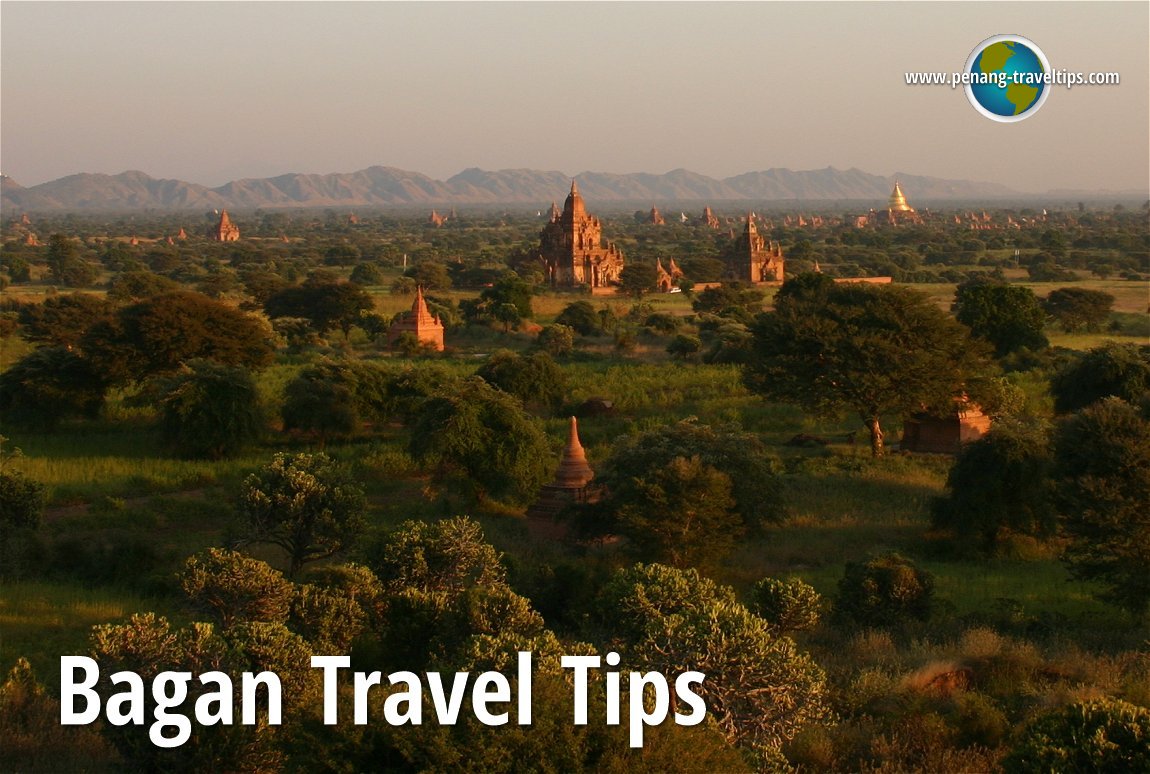 Bagan (25 November, 2003)
Bagan (25 November, 2003)
Bagan (formerly Pagan), is one of the most famous ancient city in Myanmar. It is the place in Myanmar to admire ancient ruins. Bagan ranks alongside Angkor and Luang Prabang as one of the most amazing sights in Southeast Asia. If you're into ancient ruins, there's more in Bagan than you could ever bargain for. Bagan is located on a dusty plain 300 km from Yangon. The Bagan Plains is home to hundred of Buddhist monuments, only a fragment of which is still standing today.
People come to Bagan to see its temples. There are over two thousand of them along the eastern bank of the Ayeyarwady river. That's quite a lot, and most visitors will cover only a fraction. Yet that's only the tip of the iceberg.
During the height of Bagan's power, between Anawrahta's conquest of Thaton in 1057 and Kublai Khan's invasion of Bagan in 1287, there were as many as 13,000 temples. Why so many? It was a tradition in Bagan at that time that building temples is a form of merit making. So, not only the rulers, anybody who has the means to do it will build one. The eleventh and twelfth centuries were a time of great prosperity in Bagan. Not only did the royalties engage in the pursuit of temple building, Bagan noblemen and the well-to-do were also joining in.
Map of Tourist Sights in Bagan
Places of Interest in Bagan
The following are some of the must-see sights in the city. Make sure you don't miss out on any of them, especially the ones I've marked with * !- Ananda Temple *
This is the main landmark of Bagan. - Bagan Plains
This is the wide flat expanse in which Bagan was built. - Dhammayangyi Pagoda
The second biggest temple in Bagan. - Gawdawpalin Temple
Temple near the Ayeyarwady River. - Gu Byauk Gyi Temple
Temple in Wetkyi village with fabulous frescoes. - Htilominlo Pahto
Last Bamar-style temple to be built in Bagan. - Kyanzittha Cave
A Bagan cave temple, though it looks a lot like a normal built temple. - Loka Nanda Pagoda
Bell-shaped Burmese pagoda by the banks of the Ayeryawady River. - Manuha Temple
Small temple built by King Manuha, the Mon ruler who was forced to reside in Bagan after his kingdom was defeated. - Mi Nyein Gone Temple
Little known ancient monument on the south side of Bagan. - Mingalazedi Pagoda
Burmese pagoda near the southern part of the ancient wall of Bagan. - Myazedi Pagoda
Burmese pagoda where ancient tablets of great historical significance were discovered. - Nanpaya Temple
Small, square-shaped temple. - Nyaung U Village
Village in northern Bagan with a local market offering great opportunity to view the daily life of the locals. - Shwegugyi Temple
Moderate size temple built in seven and a half months in the 12th century. - Shwesandaw Temple
Burmese temple from the 11th century. - Shwezigon Pagoda
A gleaming golden pagoda in the town of Nyaung U, northeast of Bagan. - Sulamani Temple
One of the last large-sized monuments to be built in Bagan. - Tharabar Gateway
One of the gates into Old Bagan. - Thatbyinnyu Temple
The tallest ancient structure in Bagan.
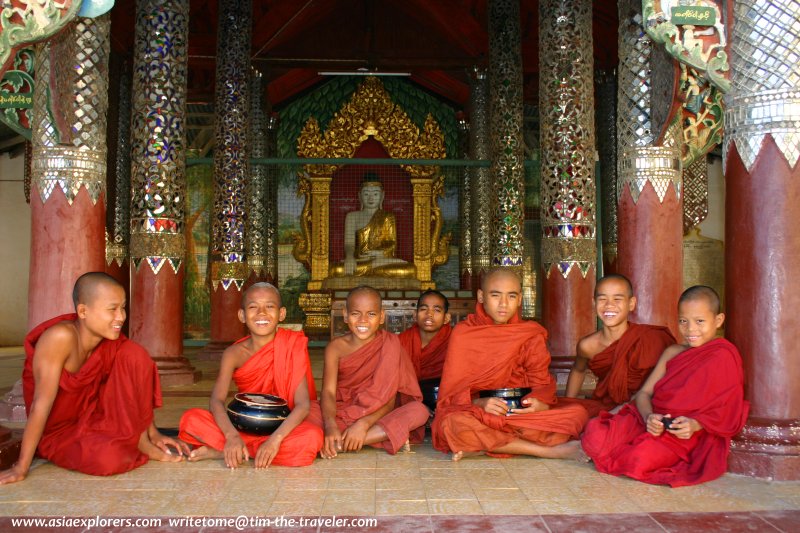 Novice monks, Shwezigon Temple, Bagan (25 November 2003)
Novice monks, Shwezigon Temple, Bagan (25 November 2003)
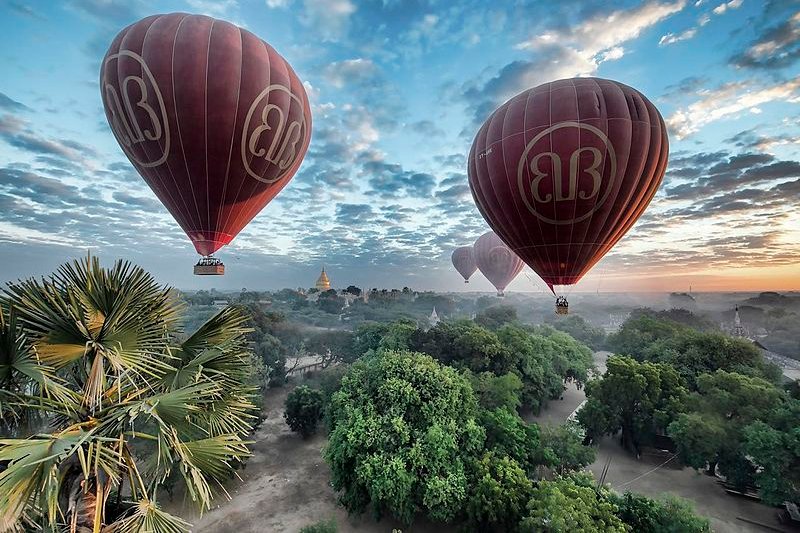 Hot air balloon over Bagan
Hot air balloon over BaganSource: https://commons.wikimedia.org/wiki/File:Hot-air-balloons-in-Bagan,-Myanmar-(Burma).jpg
Author: christopher

Author: christopher

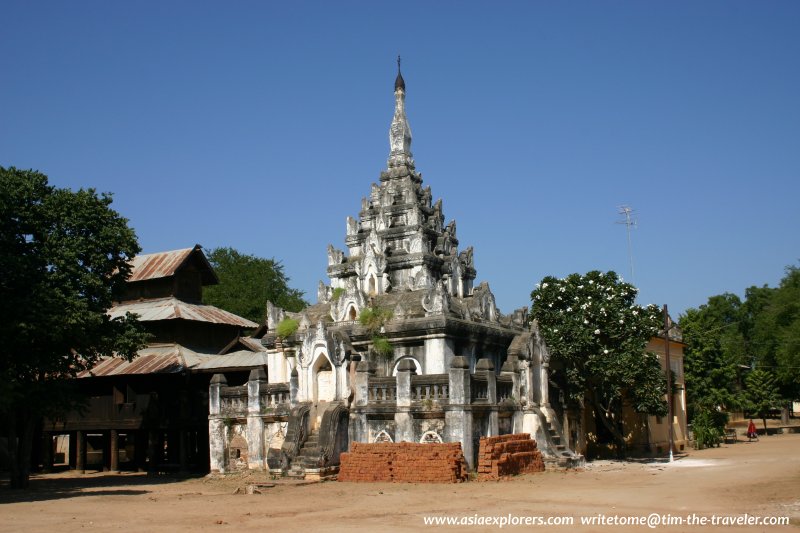 Stupa in the grounds of the Kyanzitta Cave Temple (25 November 2003)
Stupa in the grounds of the Kyanzitta Cave Temple (25 November 2003)
The plains of Bagan has been settled as early as the 2nd century, but it was only when King Anawrahta ascended to the throne in 1044 (after liquidating his predecessor King Sokkate), that the fortunes of Bagan took a different turn. At that time Theravada Buddhism has not yet reached Upper Burma, where Bagan is located. It was brought over by Shin Arahan, a young monk from Thaton, of the Kingdom of Mon in the south. Shin Arahan was instrumental in converting King Anawrahta to Theravada Buddhism, and influential in a lot of decisions made by the king thereafter.
An eager disciple of this new belief, King Anawrahta of Bagan wanted to spread the belief to his people. So he sent a messenger to the court of King Manuha of Thaton requesting several copies of the Buddhist scriptures, Tipitaka. But Manuha disregarded the request - with terrible consequence. Angry at being snubbed, Anawrahta sent his troops to Thaton and conquered the Mon kingdom. He ransacked Thaton, and brought back to Bagan everything of value: thirty sets of Tipitaka, Mon architects, Buddhist monks, and thirty thousand prisoners including King Manuha and the entire royal family.
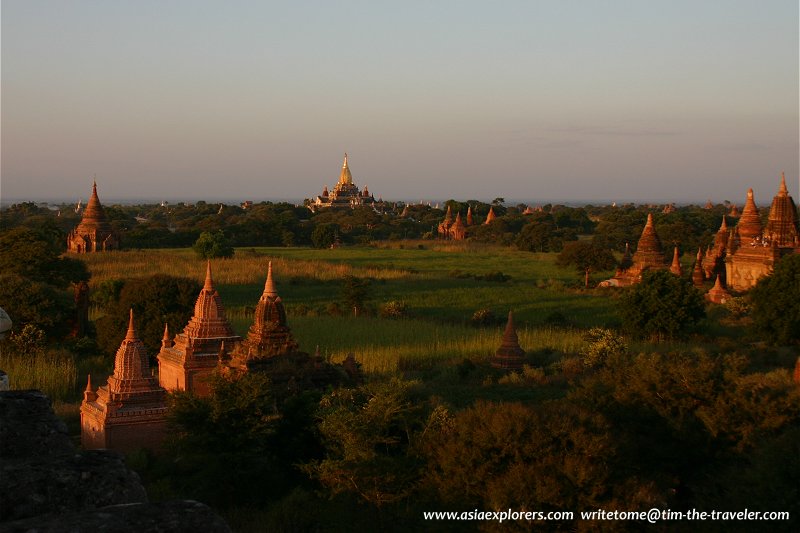 Bagan Plains at dusk (25 November 2003)
Bagan Plains at dusk (25 November 2003)
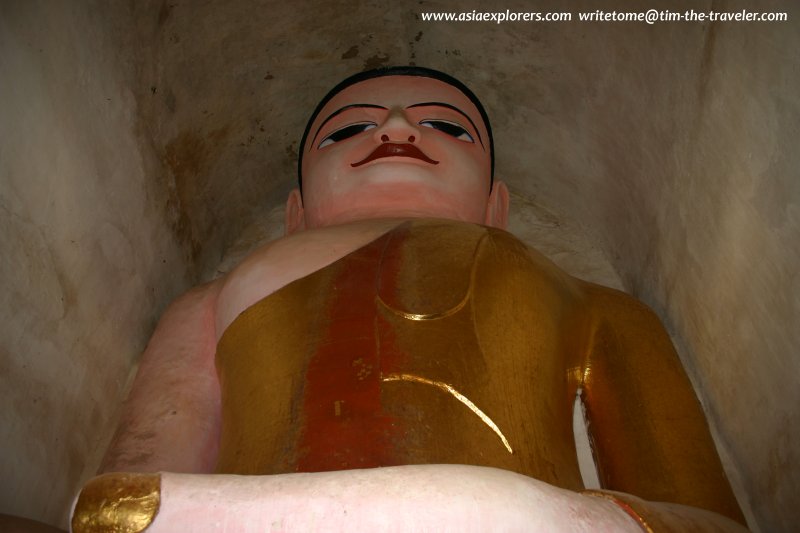 The colossal Buddha statue inside Manuha Temple (25 November 2003)
The colossal Buddha statue inside Manuha Temple (25 November 2003)
The immediate result of this transplant to Bagan was that King Manuha became a prisoner under house arrest in Bagan, along with his men and family. With skilled Mon architects and artisans in his hands, King Anawrahta embarked on a massive temple building campaign in Bagan that was to intensify under the reign of his son, King Kyanzittha, who built the most famous Bagan temple, Ananda. The indirect consequence is that Mon culture became dominant in Bagan, and indeed the Mon language replaced Pali and Sanskrit in the Bagan royal inscriptions. And quite naturally, Theravada Buddhist became the Bagan state religion.
Despite the vast amount of history and heritage that Bagan has to offer, it has yet to make it into the list of World Heritage Sites. Perhaps it's a political reason. Let's hope that one day it too will be recognised as such, for it is a place that any travel enthusiast keen on heritage should visit.
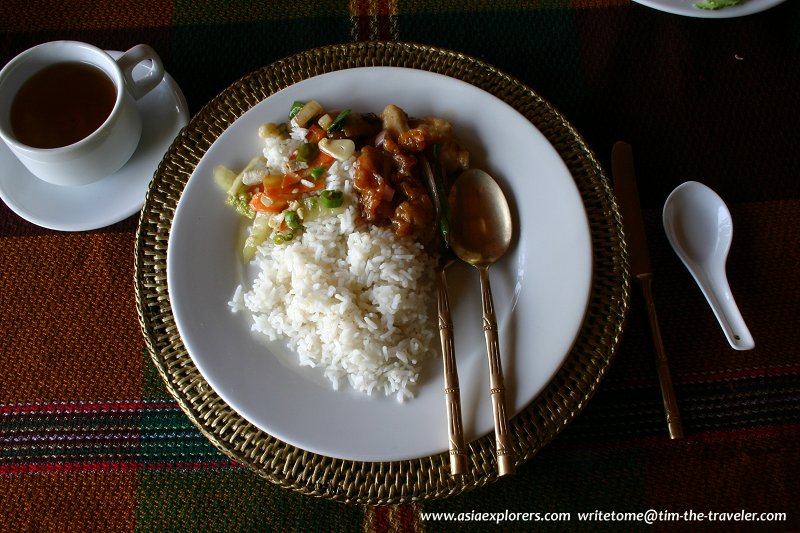 Lunch at Green Elephant Restaurant, River View, Bagan (25 November 2003)
Lunch at Green Elephant Restaurant, River View, Bagan (25 November 2003)
Getting there
You can fly to Bagan from Yangon on Air Mandalay, Air Bagan and Myanmar Airways. The airfare should be around $65. Don't expect too much comfort - I remember our luggage being transferred in what looked like an ox-cart. It may have improved a lot since then.Getting around
Perhaps the best way to get around is to hire a horse cart with driver. A whole day's ride explore the ruins should cost only about US$5.00. Negotiate if you have to. Some people rent bicycles to ride around, but I find Bagan to be too dusty and hot for me. It would be best to bicycle in the morning part of the day, say before 8:00 am. You can rent bicycles for as little as US$1.00 per day.If you have the money to splurge, the most luxurious way to view Bagan is aboard a hot air balloon. This would cost you US$200 per person for an hour or so. [an error occurred while processing this directive]
 Latest updates on Penang Travel Tips
Latest updates on Penang Travel Tips
 Map of Roads in Penang
Map of Roads in Penang
Looking for information on Penang? Use this Map of Roads in Penang to zoom in on information about Penang, brought to you road by road.
Copyright © 2003-2025 Timothy Tye. All Rights Reserved.

 Go Back
Go Back